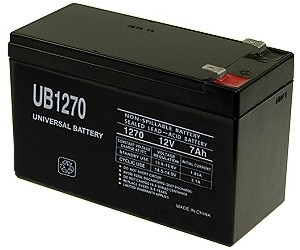Hi to everyone here,
So I am hoping for some advice on my first electric bike (conversion).
So I mostly travel on level ground but there are two hills, either of which I encounter regularly. One of them is short but steep, easily over 20º (I'd say about 35 to 40). The other is about 20º but long (about three quarters of a kilometer). So from what I understand a mid-drive might be better (also due to my weight).
So the requirements.
I live in Mexico right now and plan on moving to Toronto, ON, Canada (and I am thinking of taking the motor even if the whole bike isn't worth the bother). This means that I need a max speed of 32km/h using the motor (I can pedal faster but that's beside the point). It also means that according to Canadian law I need a max of 500w for the motor.
I personally weight about 230lbs.
I've looked at Lingbei, Tongsheng and Bafang but there was just so much information. But from what I udnerstand Tongsheng is good but not guaranteed to last, Lingbei seems to be way overpowered (32km/h on PAS1) so maybe Bafang BBS02 might be a good choice but I am completely open to any other suggestions or observations.
My plan is to use the bike as a scooter (for when I am exhausted or need to avoid being all sweaty when I get to work), PAS for when the weather will permit me some exercise without massive sweating, and as a regular bike with the motor off when I feel like getting some exercise/having fun.
The range would ideally be 20km or more but then again that depends on what battery I get (I'll most likely source one locally to avoid import problems).
Summary
Power: max 500w
Speed: max 32KM/h (20m/h)
Weight: 230lbs (240 with backpack)
Range: minimum 10, ideally 20 or more
Cost: w/o battery, $600 US
Thanks for any help/advice you can give me.
Btw, if there is a specific place for asking for this type of advice I couldn't find it and will gladly be redirected if there is.
So I am hoping for some advice on my first electric bike (conversion).
So I mostly travel on level ground but there are two hills, either of which I encounter regularly. One of them is short but steep, easily over 20º (I'd say about 35 to 40). The other is about 20º but long (about three quarters of a kilometer). So from what I understand a mid-drive might be better (also due to my weight).
So the requirements.
I live in Mexico right now and plan on moving to Toronto, ON, Canada (and I am thinking of taking the motor even if the whole bike isn't worth the bother). This means that I need a max speed of 32km/h using the motor (I can pedal faster but that's beside the point). It also means that according to Canadian law I need a max of 500w for the motor.
I personally weight about 230lbs.
I've looked at Lingbei, Tongsheng and Bafang but there was just so much information. But from what I udnerstand Tongsheng is good but not guaranteed to last, Lingbei seems to be way overpowered (32km/h on PAS1) so maybe Bafang BBS02 might be a good choice but I am completely open to any other suggestions or observations.
My plan is to use the bike as a scooter (for when I am exhausted or need to avoid being all sweaty when I get to work), PAS for when the weather will permit me some exercise without massive sweating, and as a regular bike with the motor off when I feel like getting some exercise/having fun.
The range would ideally be 20km or more but then again that depends on what battery I get (I'll most likely source one locally to avoid import problems).
Summary
Power: max 500w
Speed: max 32KM/h (20m/h)
Weight: 230lbs (240 with backpack)
Range: minimum 10, ideally 20 or more
Cost: w/o battery, $600 US
Thanks for any help/advice you can give me.
Btw, if there is a specific place for asking for this type of advice I couldn't find it and will gladly be redirected if there is.


